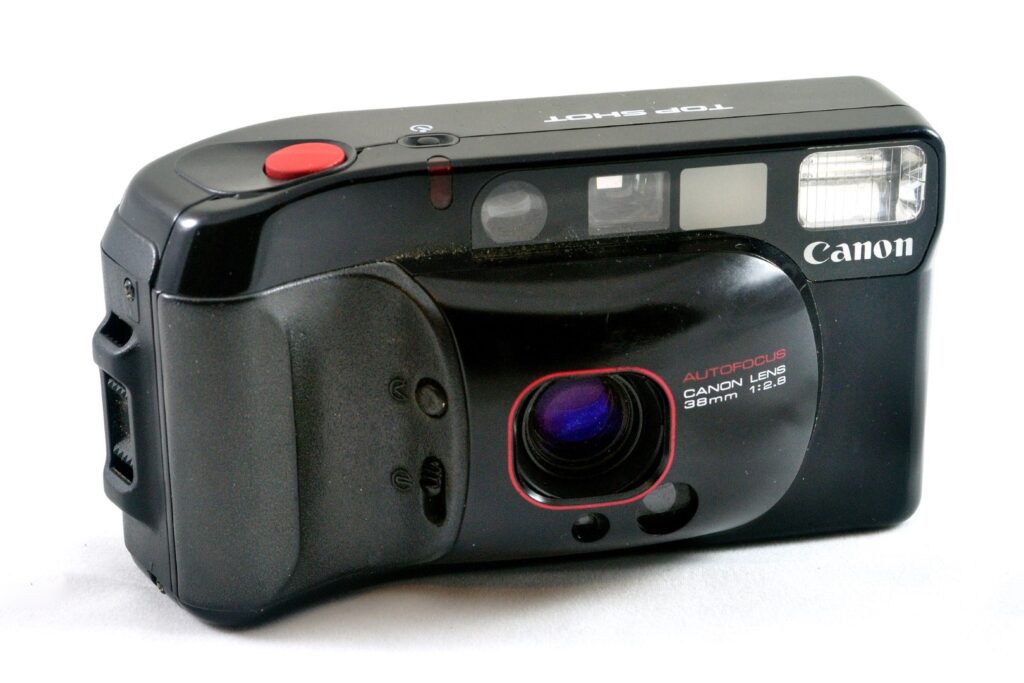
In the realm of 35mm compact cameras, the Canon Sure Shot Supreme, known as Autoboy 3 in Japan and Canon Top Shot in Europe, stands out as a true classic. Launched in the late 1980s, this gem is not just a nod to Canon’s commitment to innovation but also a testament to timeless design and performance, like many other models it was part of Canons very successful Sure Shot Series. With its sharp autofocus lens, user-friendly interface, and durable build, the Sure Shot Supreme (or Autoboy 3/Top Shot depending on your region) holds its ground as a sought-after piece among both seasoned photographers and newcomers to the analog world.
The Canon Sure Shot Supreme utilizes the 35mm film format, offering a broad range of film choices to its users. Yet, with so many options available, choosing the right film can be daunting. This guide aims to navigate you through this plethora of choices, providing insights into various film stocks, considerations specific to the Sure Shot Supreme, top film recommendations, budget-friendly alternatives, and answers to frequently asked questions. By the time you finish reading, you’ll be equipped to select the film that best complements your creative vision and maximizes the capabilities of your Canon Sure Shot Supreme.
Film Sizes and Which One Does the Canon Sure Shot Supreme Use
Film sizes determine the dimensions of photographic film, specifically highlighting the width and length. Various types of film sizes exist, such as 35mm, 120 (or medium format), and large format. Each has distinct advantages and challenges, influencing factors like detail capture, print dimensions, and the overall feel of the photos.
35mm Film: Predominantly used by countless photographers, this film size serves as the golden middle ground, considering aspects like cost, availability, and image caliber. Ideal for day-to-day photography, candid street shots, or any scenario where numerous frames are desired. The primary limitation is the relatively smaller negative size, which might capture lesser detail when compared to its larger counterparts.
120 Film (Medium Format): With a noticeably larger negative, 120 film captures finer details and offers enhanced quality when enlarging. This format is the first choice for professionals in fields like portrait photography, landscape captures, and fine art. However, the cameras designed for 120 film are generally bulkier and pricier, and each shot tends to cost more than its 35mm counterpart.
Large Format Film: For those seeking unparalleled detail and quality, large format films like 4×5 or 8×10 inches are the pinnacle. They promise exceptional sharpness and depth in tonality. But they come with their set of challenges – the cameras are sizable and on the higher end of the cost spectrum, making the film often out of reach for many photography enthusiasts.
The Canon Sure Shot Supreme, staying true to its name and design ethos, employs the 35mm film. This choice mirrors the camera’s foundational principles: being compact, economical, yet adept at delivering crisp images. Given its versatility, the Sure Shot Supreme shines in diverse scenarios, from voyages to capturing the essence of urban life. Plus, the extensive variety of 35mm film—spanning color, monochrome, and slide films—grants Canon Sure Shot Supreme photographers a vast canvas for their artistic endeavors.
The Different Types of Film Stocks
Black and White Film
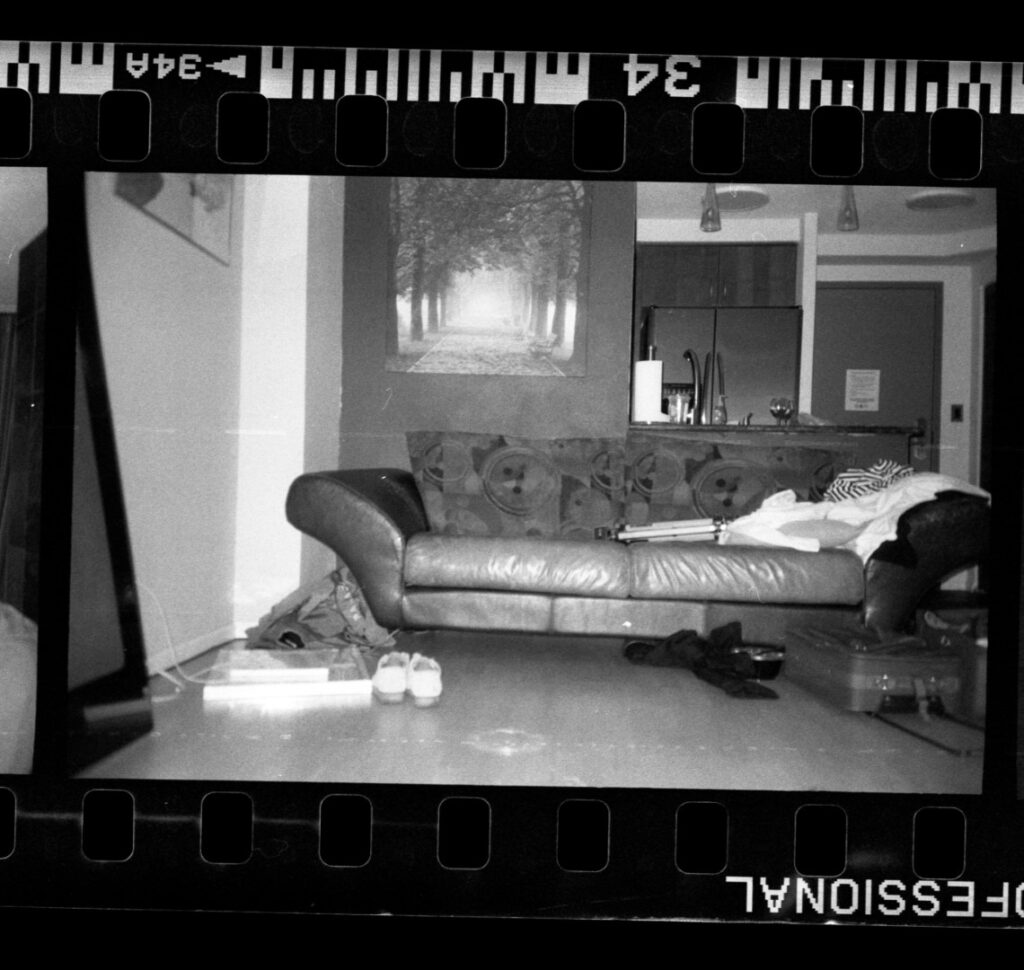
A photograph in black and white feels like stepping back in time. This film type captures scenes in a way that seems both nostalgic and timeless. What makes it special? Its ability to play with light and dark, to bring out patterns, and to showcase a broad range of shades from pure white to deep black. When using this film, some might deliver smooth shades of gray, while others pop with contrast.
The Canon Sure Shot Supreme, thanks to its quality lens, is a champ with black and white film. It dives into the details, highlighting everything beautifully. Films like the ever-popular Ilford HP5 Plus, known for being forgiving in varied lighting, and the classic Kodak Tri-X, which packs a punch with contrast, are great companions for this camera. The good news? Black and white film is easy to find and doesn’t break the bank.
Color Negative Film
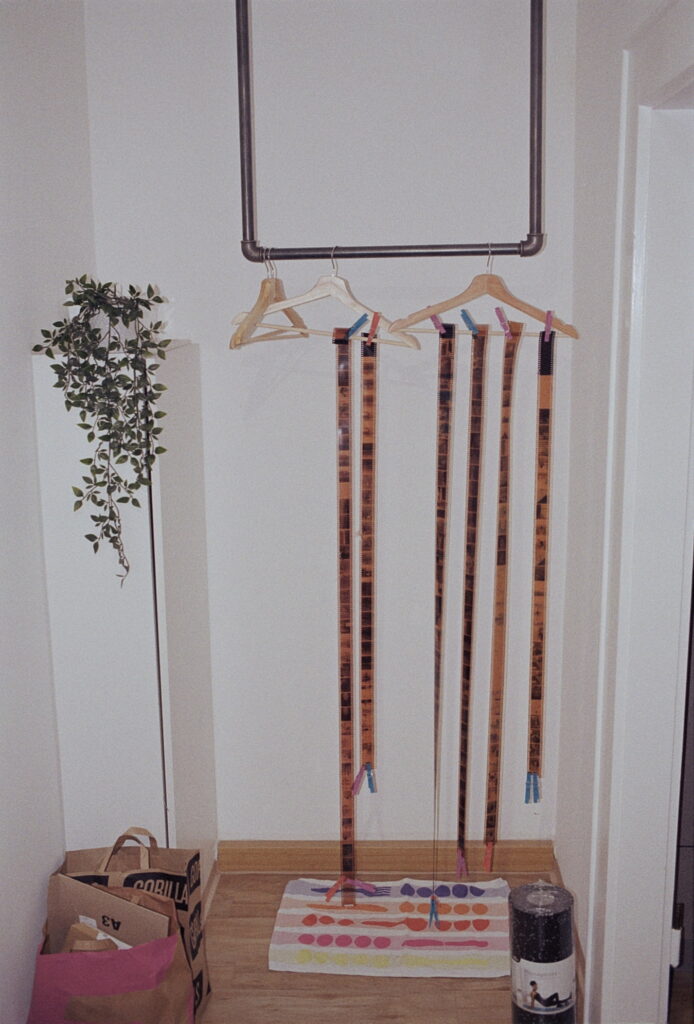
When it comes to capturing the vibrant world in color, color negative film stands out. This type of film is user-friendly, especially for those just starting out, as it’s forgiving to minor mistakes in exposure. After development, it gives a ‘negative’ image, which can be used to produce prints or be digitized.
The Canon Sure Shot Supreme, with its quality lens, works wonders with color negative film. It brings out the vividness and clarity that this film type is known for. Kodak Portra is a popular choice, appreciated for its true-to-life colors and fine grain. For those on a budget, Fujifilm Superia offers lively and bold colors. With the rising popularity of film photography, color negative film is easy to find, with prices that suit a range of budgets.
Slide Film

Slide film is a bit of a specialist’s choice, producing direct positive images on the film. It’s famous for its rich, vibrant colors and strong contrasts. However, it requires a bit more care in getting the exposure just right, as it’s less forgiving than other film types.
For those keen on using slide film with the Canon Sure Shot Supreme, a bit of practice might be in order. Once mastered, the results can be truly stunning. Fujifilm Velvia is a top contender in this category, known for its punchy colors and deep contrasts. On the other hand, Kodak Ektachrome offers a more balanced and natural color palette. While slide film offers unique results, it is a bit pricier and might require a bit of a hunt to find. But for many, the results are well worth the effort.
Considerations when choosing a Film for your Canon Sure Shot Supreme
Film Speed
Film speed, represented as ISO, plays a pivotal role in the film selection process, indicating the film’s sensitivity to light. Films with a lower ISO, such as 100 or 200, need more light to be correctly exposed, making them suitable for bright conditions. In contrast, higher ISO films, such as 400 or 800, are more adapted to lower light environments or to capture swift-moving subjects.
The Canon Sure Shot Supreme boasts an automatic exposure system, with shutter speeds ranging from 1/8 to 1/500s and is compatible with DX-coded films from ISO 50 to 1600. When deciding on a film for the Sure Shot Supreme, consider the range of lighting scenarios you’ll encounter. Bright and sunny environments pair best with ISO 100 or 200 films, whereas ISO 400 or 800 films are more versatile for diverse or dimly lit situations.
Aesthetic Qualities of the Film Stock
Every film stock introduces its distinctive aesthetic, from color rendition, contrast balance, grain texture, to the overarching mood of the photographs. While some films yield vivid and rich colors, others might lean towards subdued and delicate shades. Black and white films have their own spectrum too, from pronounced contrasts to subtle grain nuances. Equipped with a 4-element glass lens with a 38mm focal length, fast at f/2.8, the Canon Sure Shot Supreme excels in capturing these film characteristics. Thus, your film choice should mirror your creative vision and aspirations.
Developing and Scanning Film
Once you’ve taken your shots, developing and scanning become the subsequent critical stages. Some photographers enjoy the hands-on experience of developing films at home, enjoying the control it offers, while many others prefer the expertise and convenience of specialized labs. DIY development might entail a learning curve, alongside the need for equipment and patience. Labs offer a more straightforward route, but might be costlier.
As for scanning, the decision often oscillates between self-scanning with a personal film scanner or availing professional lab services. Though labs typically ensure top-tier results, they might be on the pricier side. Home scanning, while providing more personal control, is dependent on the quality of the scanner.
For Canon Sure Shot Supreme users, decisions around developing and scanning will be influenced by budget, dedication to the craft, and the desired output quality. Given the camera’s adeptness with 35mm films, both color (C-41) and black and white processes can accommodate its shots, ensuring they can be managed by most labs and scanning setups.
Top Film Choices for the Canon Sure Shot Supreme
Color Films
For the Canon Sure Shot Supreme, three color films excel in their synergy with the camera’s performance and features:
Kodak Portra 400
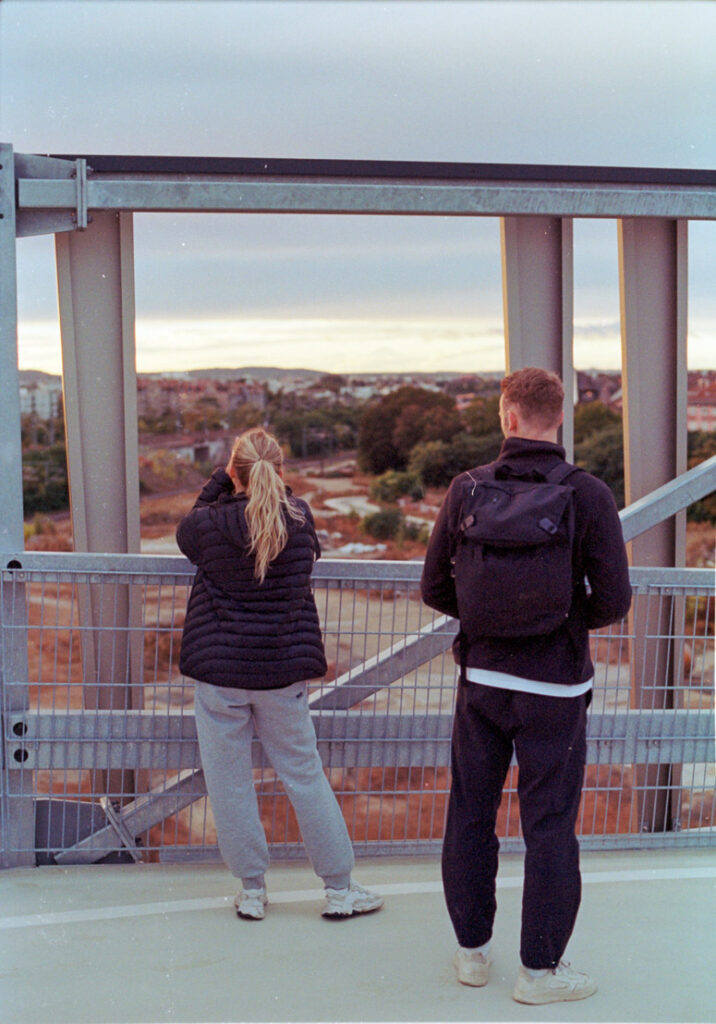
Kodak Portra 400 is often hailed as a pinnacle of color film engineering. With its ISO 400 rating, it’s versatile enough to be used in a myriad of lighting conditions, from golden hour to overcast skies. Its renowned attribute is its natural color reproduction, particularly with skin tones, making it a favorite for portraits. However, its prowess doesn’t end there. Landscapes, urban scenes, and candid moments all benefit from its fine grain and wide exposure latitude. Photographers love Portra 400 for its ability to deliver consistently pleasing results, be it in sunny outdoors or shaded venues. The broad dynamic range ensures that the film captures the intricate details from shadows to highlights, making each shot a potential masterpiece. Check current prices here.
Kodak Ektar 100
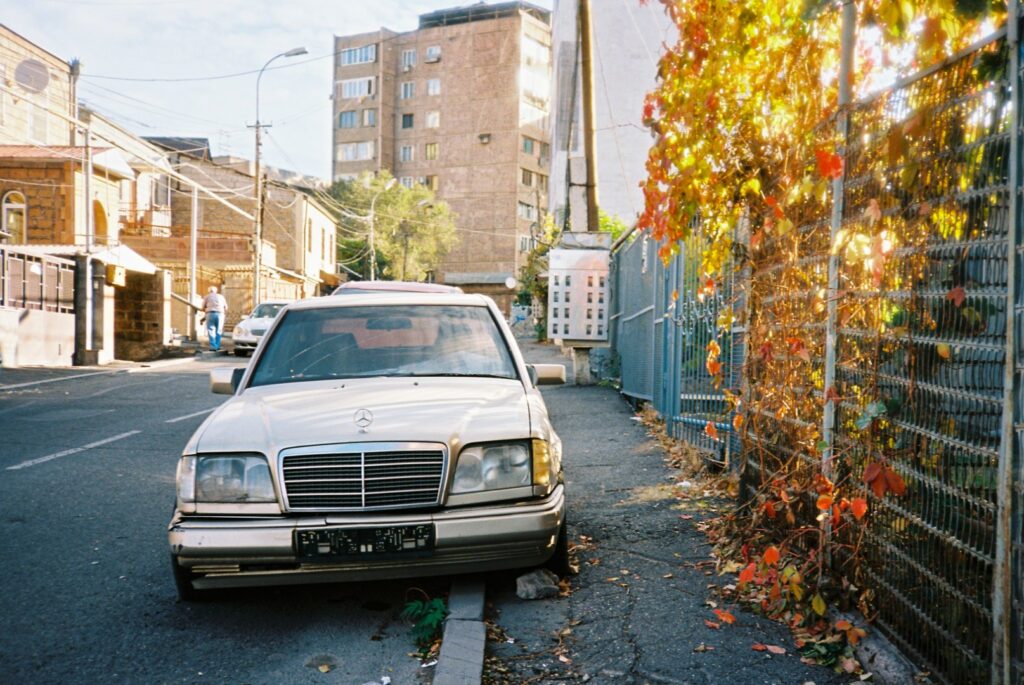
With an ultra-fine grain structure and vivid color palette, Kodak Ektar 100 has made a name for itself among enthusiasts and professionals alike. Pegged at ISO 100, it’s optimally used in well-lit situations, where it can flaunt its vibrant saturation and sharpness. While Ektar can deliver stunning portraits with a unique color signature, it truly shines in landscapes and nature photography, where the film’s inherent vibrancy captures the world in a rich, almost surreal manner. Its reputation as one of the sharpest and most colorful films in the 35mm format has cemented its place in many photographers’ toolkits. Check current prices here.
Superia Xtra 400
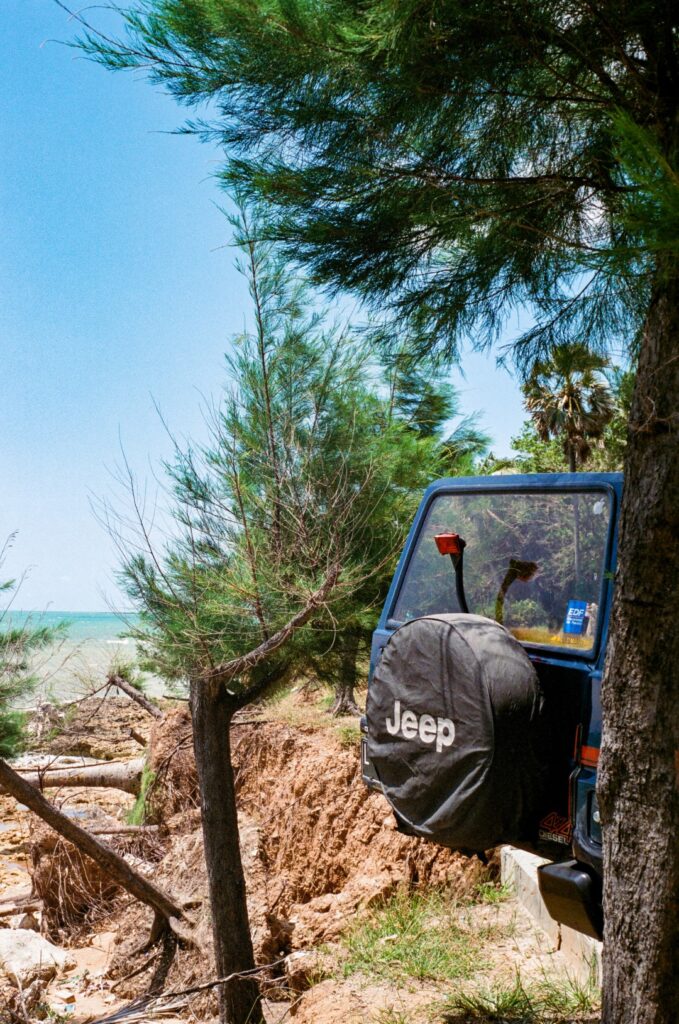
An offering from Fujifilm, Superia Xtra 400 is cherished for its flexibility and character. It seamlessly meshes the need for speed, courtesy of its ISO 400 rating, with a dynamic color profile that gives photos a distinct, memorable touch. Perfect for everyday snapshots, travel diaries, or any spontaneous shoot, Superia Xtra 400 offers a balanced palette with just a hint of warmth, making moments feel both vivid and nostalgic. The grain structure, while slightly more pronounced than some of its counterparts, adds a charming texture that many photographers find appealing. It’s a film that beautifully bridges the gap between professional results and accessibility for hobbyists. Check current prices here.
Black and White Films
The charm of black and white photography remains eternal. It removes the complexity of color, honing in on the genuine emotions, textures, and narratives captured in each shot. Below, you’ll find three black and white films that have received praise for their distinctive qualities and outcomes:
Ilford HP 5 Plus

Ilford HP5 Plus is a dependable choice for black and white photography. With its ISO 400 speed, it’s versatile enough to handle a variety of lighting situations. It captures good contrast, revealing both shadows and highlights effectively. The film is known for producing images with rich details, making it great for everyday photography, from capturing urban scenes to spontaneous moments with friends. The Canon Sure Shot’s autofocus and exposure capabilities complement this film well, ensuring you get sharp, well-lit photos every time. Check current prices here.
Fomapan 400

For those who appreciate a touch of nostalgia in their photos, Fomapan 400 offers that classic grainy look reminiscent of old photographs. This ISO 400 film provides a balance of sharpness and grain, adding a unique character to your shots. It’s a good fit for various lighting conditions, from overcast days to sunny afternoons. Paired with the Canon Sure Shot, it becomes an affordable and effective combo for those starting in film photography or those who enjoy experimenting without a hefty price tag. Check current prices here.
For more Foma 400 images, check out my Fomapan 400 Flickr album. We’ve captured our firsthand experiences with Fomapan 400 in this YouTube video, covering everything from shooting to self-developing the film. Take a look for a comprehensive look.
Kodak Tri-X 400
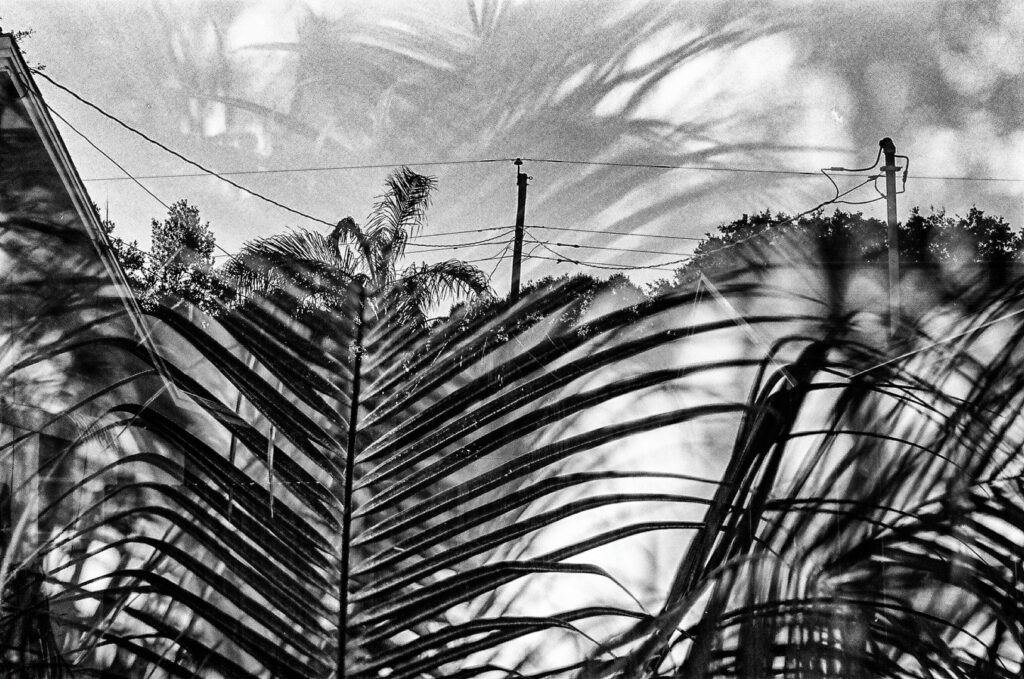
Kodak Tri-X stands out as a favorite for many film photographers. Its distinct grain structure adds texture and depth to photos, allowing for creative shots with a bit of an edge. The ISO 400 rating ensures it’s adaptable, suitable for both dim interiors and bright outdoor settings. Whether you’re into street photography, portraits, or just capturing daily life, Tri-X offers a level of reliability and artistic flair. When used with the Canon Sure Shot, the two make a dynamic pair, capable of creating impactful black and white imagery. Check current prices here.
Slide Films
Velvia 50
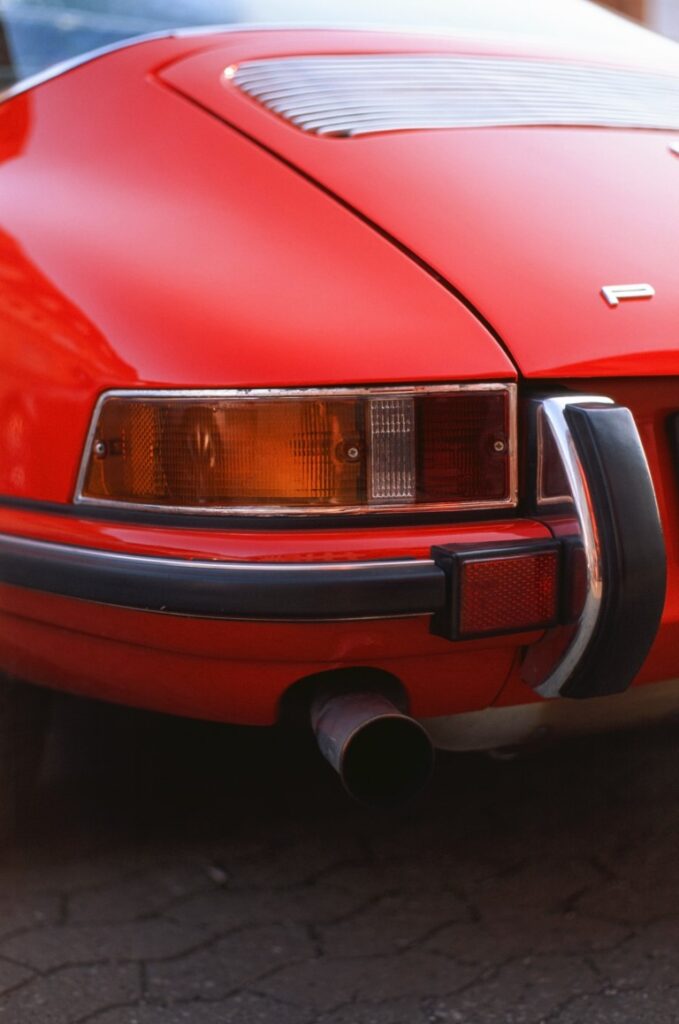
Fujifilm Velvia 50 remains a standout slide film, acclaimed for its intense saturation and sharp contrast. The result? Images bursting with vivid colors and deep, striking shadows. With its ISO 50 rating, Velvia 50 is best utilized in bright conditions, making it a top pick for outdoor settings, whether that be scenic landscapes or detailed nature shots. Paired with the Canon Sure Shot’s efficient autofocus and consistent exposure system, Velvia 50 is set to deliver vibrant, detailed images. A word of caution: its narrow exposure tolerance means it’s crucial to be attentive to light settings to avoid over or underexposing the shot. Check current prices here.
Ektachrome E100

Kodak’s Ektachrome E100 slide film is prized for its balanced colors and refined grain pattern. Distancing itself from the over-the-top saturation commonly associated with some slide films, Ektachrome E100 offers a more natural, true-to-life color profile, coupled with sharp details and a commendable range between lights and darks. The ISO 100 rating means it thrives in well-lit environments, be it outdoors under the sun or indoors with ample light. In combination with the Canon Sure Shot’s precision in focusing and metering, Ektachrome E100 can produce images that are sharp, well-balanced, and captivating. Given its high quality, it’s no wonder this film is a favorite among both pros and hobbyists. Check current prices here.
Budget-Friendly Film Alternatives for the Canon Sure Shot
Kodak Gold 200
Kodak Gold 200 remains a popular choice among color negative films, especially for those on a budget. Its strength lies in its balanced color palette, striking a good mix between vibrancy and naturalness. Whether capturing portraits or landscapes, this film often imparts a warm, nostalgic feel to images. The ISO 200 rating works well for day-to-day shooting, be it outdoors or in well-lit indoor settings. When matched with the Canon Sure Shot, Kodak Gold 200 consistently delivers rich and memorable photos. Given its cost-effectiveness and wide availability, it’s a staple for newcomers to film or anyone seeking a reliable film for daily use. Check current prices here.
Ilford Kentmere 400
Stepping into the world of black and white without breaking the bank? Ilford Kentmere 400 is the answer. This film offers commendable sharpness and contrast at a fraction of the cost of some higher-end alternatives. The ISO 400 rating provides flexibility across different lighting scenarios, adding to its appeal. When loaded into the Canon Sure Shot, Kentmere 400 outputs photos that celebrate a spectrum of greys, offering depth and a pleasing contrast between light and dark. Whether you’re a student, a film newbie, or simply someone wanting to explore black and white photography economically, Kentmere 400 is a solid pick. Check current prices here.
Frequently Asked Questions about Using Film in Canon Sure Shot Supreme
What Type of Battery Does the Canon Sure Shot Supreme Use and How Long Does It Last?
The Canon Sure Shot uses a 2CR5 lithium battery. Battery life can vary based on several factors including how often you use the camera, the age of the battery, and the conditions under which the camera operates.
What is the best type of film for Canon Sure Shot Supreme for outdoor photography?
Outdoor scenarios often present bright and colorful subjects. A lower ISO film, such as Fujicolor 100 can be suitable due to their clarity and fine grain structure. However, your choice of film should also align with your personal artistic vision and the aesthetic you’re aiming for.
Can I use slide film in Canon Sure Shot Supreme?
Absolutely. The Canon Sure Shot Supreme is compatible with slide films, known for their sharpness and vivid color reproduction. However, slide films generally have a tighter exposure tolerance compared to color negatives, necessitating precise metering.
How does ISO influence images taken by the Canon Sure Shot Supreme?
ISO denotes film sensitivity to light. Higher ISO values, such as 400, mean the film is more receptive to light, which is beneficial in dim settings but might lead to grainier photos. On the other hand, a lower ISO like 100 is less sensitive but yields a smoother grain, which is optimal for brighter environments.
Where can I get films shot on my Canon Sure Shot Supreme developed?
You’re spoilt for choice when it comes to film development. Local film labs in most urban areas provide processing services. Alternatively, there are mail-order labs that offer the same services. If you’re inclined towards hands-on processes, consider home development with the right set of chemicals and tools
What are some economical film alternatives for the Canon Sure Shot Supreme?
For those on a budget, the Canon Sure Shot Supreme pairs well with films like Kodak Gold 200 for colored shots and Ilford Kentmere 400 for monochrome imagery. These films strike a balance between cost-efficiency and quality, making them apt for daily shooting or for newcomers to the world of film.


